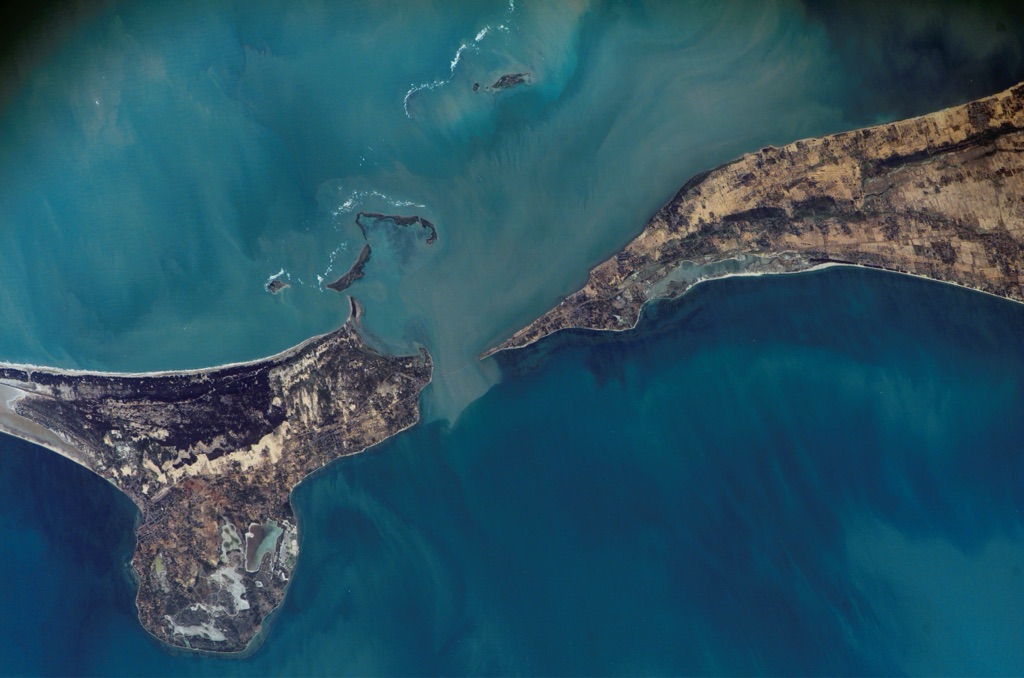The Ram Setu Bridge, also known as Adam’s Bridge, is a chain of limestone shoals between Pamban Island, also known as Rameswaram Island, off the southeastern coast of Tamil Nadu, India, and Mannar Island, off the northwestern coast of Sri Lanka. Geological evidence suggests that this formation is a natural one, while some believe it to be a man-made structure. The bridge has been at the center of a historical, archaeological, and religious debate for many years. According to Hindu mythology, the bridge was built by the god Rama and his army to reach Lanka and rescue his wife Sita from the demon king Ravana, as described in the ancient Indian epic, the Ramayana.
Get your dose of History via Email
Historical Background of Ram Setu Bridge
The discovery of Ram Setu Bridge dates back to historical records and maps found by the British during their colonial rule in India. The first map featuring the bridge was prepared by a British cartographer in 1804. The bridge’s existence is intertwined with the Hindu epic, the Ramayana, which suggests it was built by Lord Rama with the help of an army of monkeys over 5000 years ago. However, scientific studies indicate that the structure is a natural formation.
According to Hindu tradition, the bridge was passable on foot up to the 15th century until storms deepened the channel. The Ramayana describes it as being built by Rama, one of the avatars of the Hindu deity Vishnu. The purpose was to reach Lanka and defeat the demon king Ravana, who had kidnapped Rama’s wife, Sita.
Archaeological studies have not conclusively determined the origins of the bridge. While some believe it to be a natural formation, others argue for its man-made origins. The bridge has not been directly linked to any known ancient civilization, but its significance in Hindu mythology connects it to the ancient Indian culture.
The bridge has been the scene of several historical events. In the 15th century, a cyclone deepened the channel and rendered the bridge impassable. Later, during the British colonial period, there were proposals to dredge the channel to allow ships to pass, which faced opposition due to religious reasons.
Throughout history, Ram Setu has remained a strategic maritime passage. It has also been a focal point of cultural and religious significance, especially for Hindus who believe in its sacredness and historical importance as described in the Ramayana.
About Ram Setu Bridge
Ram Setu Bridge stretches approximately 48 kilometers (30 miles) from Pamban Island in India to Mannar Island in Sri Lanka. The bridge’s unique structure consists of a series of limestone shoals. It is roughly 3 to 30 meters (10 to 100 feet) deep in places and varies in width.
The materials that make up the bridge are primarily limestone and sandstone. These materials suggest a natural origin, as they are commonly found in shallow, tropical ocean waters. The bridge’s structure is somewhat linear, which has led some to speculate about its construction.
Architectural highlights of the bridge are not applicable in the traditional sense, as it is not a man-made structure with designed features. However, the bridge’s alignment and composition have intrigued both scientists and historians. The shoals are visible from the air and can be seen in satellite images, which adds to the fascination with the structure.
Despite its natural origins, the bridge has been a subject of mythological significance. The Ramayana describes the bridge as being built by Nala, the son of the architect god Vishwakarma. Monkeys are said to have used stones and boulders to construct the bridge, which floated on the water by the power of Rama’s name.
While the bridge today is not in a condition that would allow for foot passage, it remains a point of interest for pilgrimages and tourism. The Indian government has considered the bridge’s potential for navigation and has debated the possibility of dredging the channel for maritime purposes.
Theories and Interpretations
There are several theories about the Ram Setu Bridge. The most prominent is the belief that it is a man-made structure, as described in the Hindu epic, the Ramayana. This theory is supported by some through religious texts and interpretations of satellite imagery.
Another theory suggests that the bridge is a natural formation, created by the process of accretion and sedimentation. Geological evidence supports this theory, indicating that the sandbanks were formed by limestone shoals accumulating over time.
The mystery of the bridge’s origin has led to various interpretations. Some have matched the bridge to descriptions in the Ramayana, while others have looked to geological timelines to understand its formation. The debate over its origin has been a point of contention between religious beliefs and scientific evidence.
Dating the bridge has been attempted using carbon dating and other geological methods. These studies have suggested that the structure is around 7,000 years old, predating the timeline of the Ramayana. This has added to the complexity of interpreting the bridge’s history.
The bridge’s significance has been interpreted in various ways. For some, it is a testament to the historical and mythological narrative of India. For others, it represents a fascinating geological structure that raises questions about the earth’s historical climate and sea level changes.
At a glance
- Country: India and Sri Lanka
- Civilization: Connected to ancient Indian culture as per Hindu mythology
- Age: Geological studies suggest around 7,000 years old

